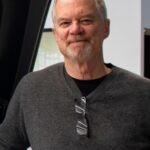Far too many product development professionals take sides in the (alas, unnecessary) conflict between the unlimited potential of human innovation and the incredible power of good standards. On the one hand, the “free spirits” fear that lean standards limit creativity and lead to painfully boring products. On the other, the “technocrats” are haunted by visions of cost overruns and operational chaos that result from unconstrained imagination run amuck.
Whenever I encounter someone using this limiting form of binary thinking, I remind them that those who can embrace conflict find it to be a huge source of opportunity. And this is definitely the case here.
An effective way to think about this dilemma is to see it not as an either/or problem, but as an “and” opportunity. The “fixed and flexible’ philosophy emerged out of work with my colleagues at Mazda more than a decade ago with significant benefit to both companies. I believe this seemingly simple concept can have profound implications for your development capability.
“Fixed” elements in product development are often expressed through standards that are experienced-based solutions for typical/recurring problems. Or they can be critical, progressive “quality of event” criteria built into the development process in order to help teams determine normal from abnormal conditions during a development project. In both cases, these standards are a powerful mechanism for applying the learning from one project to the next.
Over time, experience and knowledge accumulate, standards are updated and developers are able to make decisions faster and with better quality. These clear criteria (which are captured and communicated to the team) make the ability to learn and apply new knowledge a true competitive advantage in a very real way. Developers do not have to waste time and resources learning things over again. Aligning on the fixed portion of the project is also crucial in understanding and managing the program’s risk profile.
“Flexible” aspects of product development are those in which innovation and creativity add the most customer value through resulting differentiation. They are the very heart of the product’s unique value proposition – the “why” we are doing this project. In this case the high level vision of “what” we are trying to do may be understood but the how is not. Consequently the risk profile and gaps in knowledge are significant in this part of the project and will require substantive innovation.
Fortunately, the fixed elements mentioned above allow developers to focus their energy and creativity where it will provide the greatest possible return in the product. A deep understanding of how this product will deliver value coupled with a compelling vision for the product is essential. It is equally important that the organization is aligned around this vision and that each team member understands how he or she will contribute to achieving success. The Chief Engineer concept paper and related activities are incredibly helpful.
Product and Process Examples
Here are a few straightforward examples of fixed and flexible in product and manufacturing processes from the auto industry. The first one is individual part interface standards for components that are part of a larger system like modules or platforms. Focusing on proven standards only at critical interfaces allows for maximum creativity on the majority of the component design while simultaneously safeguarding critical system performance by fixing a very few key design attributes.
Another example comes from the car front hood assembly. The inner hood, whose function goes largely unnoticed by customers, is created from standard geometry and only modified to fit the specific shape and size application (fixed) while the outer hood which is crucial to vehicle styling and appeal is left largely to the creative direction of the designer (flexible).
Finally, common part locating strategies and basic standard assembly sequences are fixed to create a standard Bill of Process while the majority of the vehicle is designed to deliver its own unique value proposition. This allows the best companies to build eight or more very different vehicles on the same assembly line creating incredible efficiencies and manufacturing flexibility with high degree of quality without resorting to mere “badge differentiation” between products.
I think it is important to emphasize that the fixed portions of design should always be limited to the critical few elements. In this way you can maintain critical to quality, performance and manufacturing requirements while simultaneously enabling innovation.
At Ford, understanding and executing to fixed and flexible aspects of our products and processes helped enable us to deliver some of the most exciting and innovative designs in Ford’s history. Body fit and finish were among the best ever, all while simultaneously reducing investment costs and lead-time and improving product quality.
A more recent example of this is the Toyota New Global Architecture, in which the combination of breakthrough technologies and powerful standards created from decades of experience have led to a 20 percent reduction in resources required for development, lower manufacturing investment costs, and products with dramatically better ride and handling characteristics. It is an important part of what continues to give them the highest profit per vehicle in the industry.
The fixed and flexible concept applies equally well to your development process, management system and organizational strategy. However, the real secret of making the concept work for you lies in understanding what and how value is delivered to your customers and development teams. Ignorance is expensive and wasteful; deep knowledge is key. And don’t forget that creative tension – conflict can indeed be a tremendous opportunity if you know how to leverage it to get the most out of your development system.
Best,
Jim
P.S.
Our learning partnership continues to grow. Our latest partner is FMC Technologies, a global leader in undersea oil and gas exploration technology whose products have to function flawlessly at more than 5,000 feet below sea level. After an outstanding kickoff week, we are working with FMC on major projects in Brazil, California and Texas. We think they will be an excellent add to the partnership.
Our next Partner Co-Learning Event will be held at GE Appliance in Louisville later in May. We will see firsthand the role of GE’s path-breaking “First Build” in capturing, understanding and delivering customer-defined value in new products. We are bringing in globally recognized experts John Drogosz and Durward Sobek to help deep-dive trade off curves and set-based innovation and discuss our partners’ experiences with these methods in the real world. We will also share the incredible progress several of our partners have made in building product-differentiating craftsmanship into their products.






